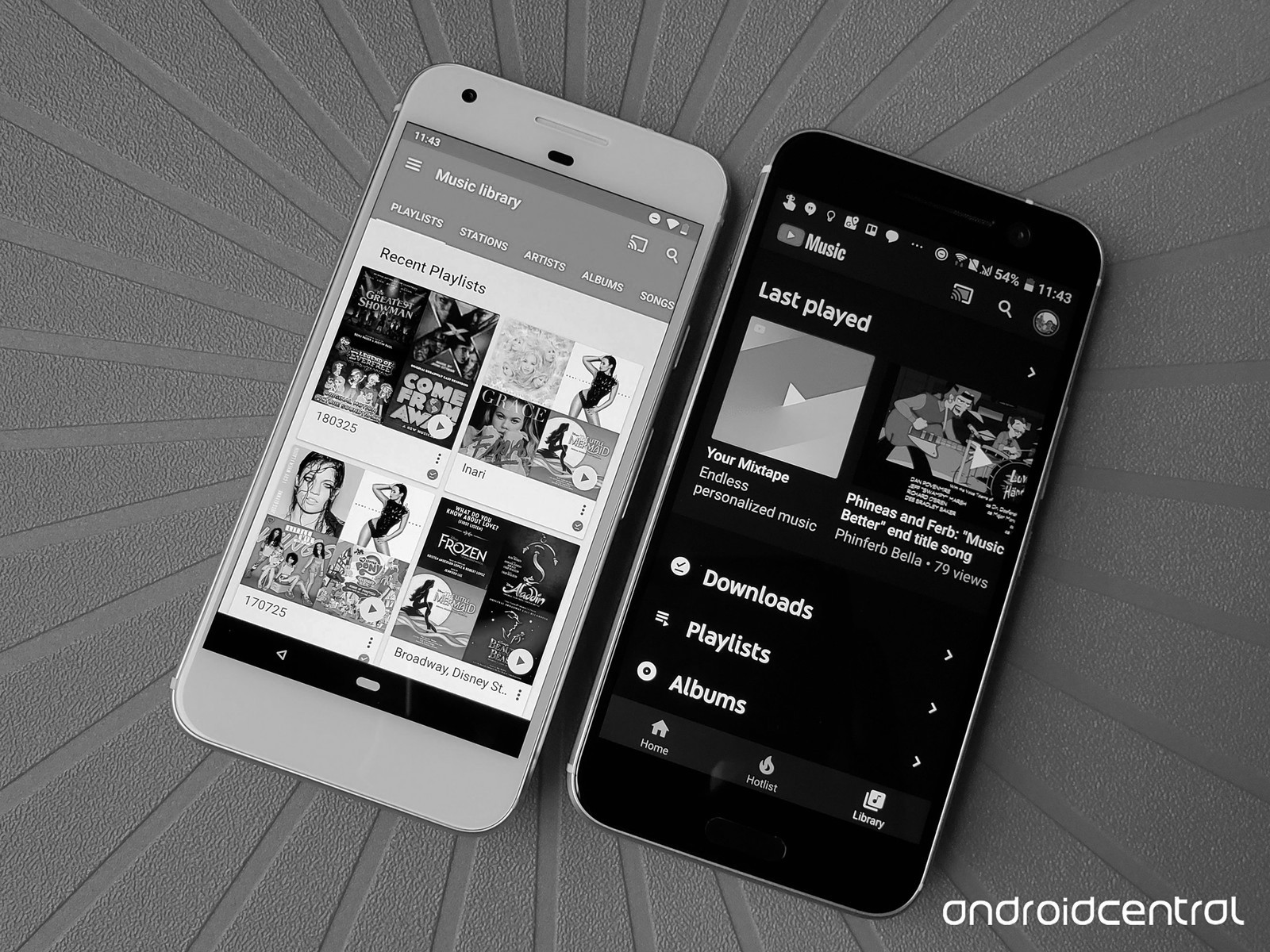When we compare music services, we’re usually trying to help you figure out which one you should give your money to. After all, it’s somewhat rare for a company to offer two completely different music services with completely different feature sets and catalogs, but Google has always been somewhat rare when it comes to music.
If you pay for Google Play Music, you get a Premium subscription to YouTube Music with YouTube Red. If you pay for YouTube Red, you get a premium subscription to Google Play Music. Because you get both of these services when you subscribe to one, this comparison is going to be a little bit different.
Google also keeps slipping out details of plans for YouTube Music eventually replacing Google Play Music, and while that is a long, long ways off, it is definitely something to keep in mind as you consider both platforms and which one it worth your time right now.
Google Play Music has been around since 2011, and its last big overhaul was five years ago, at Google I/O 2013, when it announced All Access, the name of their streaming subscription, and a complete app overhaul. As you can imagine, an app that hasn’t seen any real UI changes in five years feels long in the tooth, but at the very least, everyone knows where everything is and we’re all very familiar with Google Play Music’s bugs and quirks.
YouTube Music has technically been around since 2015, but the app received a major overhaul with the announcement of YouTube Premium, YouTube Music Premium, and “a new music streaming service” YouTube Music. The app’s UI was almost completely redone, especially in how albums and songs from labels were presented. While stations reigned supreme in the old YouTube Music, Playlists have taken over the Home tab and many of its recommendations.
YouTube Music is “brand new” and currently in “Early Access”, which is a very nice of way of saying it’s still a beta. It’s really buggy and there are a lot of basic things like library management and audio quality settings that are currently sub-par or outright missing in YouTube Music.
Google Play Music is the beat-up, old pickup that needed body work three years ago and YouTube Music is a kit car that is going to be really cool and unique once Google finishes building. It’s got four wheels, a chassis, and a motor, but the gear-shift is sticking out of a hole in the floor and it needs lights and doors before it’s ready to drive on more than a driveway.
YouTube Music has much of the UI I’ve wished Google Play Music would bring us after five years of orange/white Material Design 1.0 and hamburger menus. YouTube Music’s app is wonderfully dark — the same dark theme I’ve begged YouTube and Google Play Music to get for years — and it uses the same bottom tab format that YouTube, Spotify, and many, many apps have switched to in the age of the extra-tall smartphone display.
Google Play Music has felt bloated for years, with a hamburger drawer stuffed full of menus and features, but at least it has features. YouTube Music is rather lacking in that department right now. YouTube’s algorithm-based Your Mixtape beats the pants off Google Play Music’s I’m Feeling Lucky — wow, that name is a throwback — but otherwise, Play Music has everything YouTube Music needs:
- Robust library management (especially on desktop)
- Proper queue management and queue saving
- Larger official, label-based catalog
- Music locker for filling gaps in the available catalog
- Gapless playback
- Genre browsing
- Station/radio browsing
- Top charts by album, song, and genre
- New releases by album, genre
- Android Auto support
- Wear OS support
YouTube Music has three tabs on its app: Home, Hotlist, and Library, and Hotlist is for the most part useless, since it shows trending and popular music videos and only music videos. A “New releases” carousel can appear for users in the Home tab, but it shows less than a dozen albums and the albums shown are based on what YouTube thinks you like.
Also, say what you will about casting personal music or lengthy tracks from Google Play Music — and I can say plenty — but at least when you cast from Google Play Music it doesn’t rearrange your play order or disable shuffle and repeat. Chromecast audio is also reserved for YouTube Music Premium users only, which is just weird for a music service, even if it is built around video.
Google Play Music’s long-term future is unclear, but its short-term future is assured by YouTube Music’s current, half-finished state and very limited availability. YouTube Music might replace Google Play Music one day, but only after it has achieved feature parity, stability, and wide availability. YouTube Music is currently an “Early Access” beta that’s available in five countries — Australia, South Korea, New Zealand, Mexico, and the United States — and has more bugs than a Texas garden.
Google Play Music may be old, and it may be a little bit boring, but you can depend on it for a while longer, and when it comes time for it to finally fade into the sunset, your library will migrate to YouTube Music, which will have to have taken on most if not all of Google Play Music features. So I’m playing with YouTube Music because it’s new, shiny, and comes with my Google Play Music subscription, but Google Play Music is the music I come back to every morning when I wake up and every night when I wind down. Google Play Music still has my music locker and it has my back; I can trust it to behave the same way it has for the last six years that I’ve used it.
Originally posted by AndroidCentral


